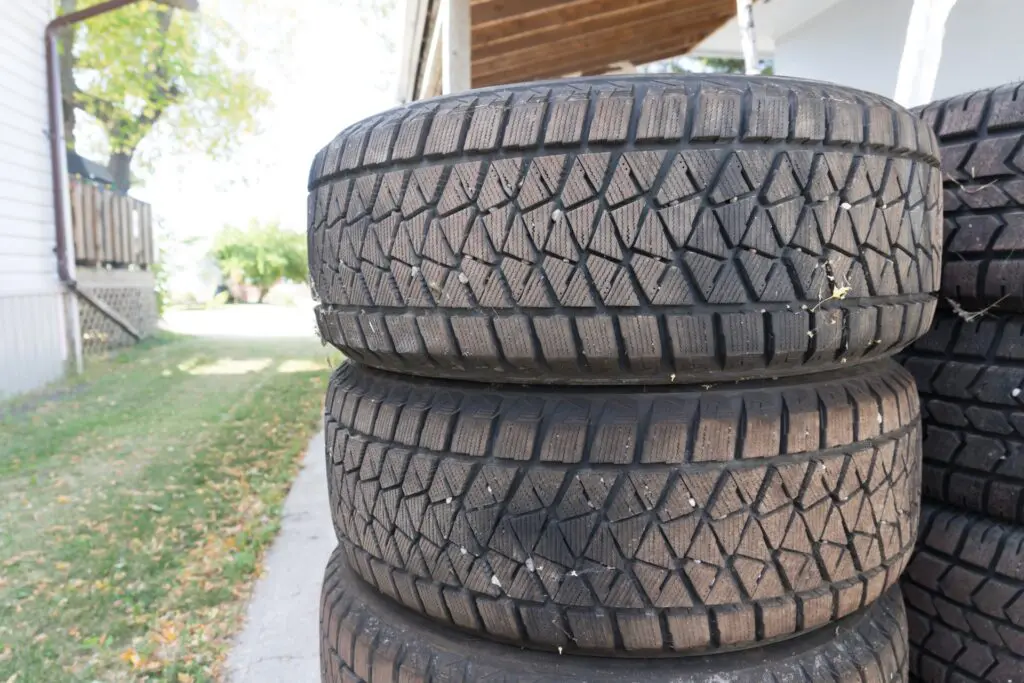Spring has sprung and that means both spring cleaning and putting those winter tires away as well. However, before you simply toss your tires in the back of your garage until the first snowfall like a slightly deflated soccer ball you’ll definitely get around to inflating one day, you’ll want to take additional care to make sure they’re in just as good condition then as they are now. That then begs the question: how do you store winter tires?
How to Store Winter Tires: The Basics
Firstly, how you store your tires mainly depends on whether or not they are mounted on rims/wheels. We created a simple and easy guide on the specific details of how to store mounted and unmounted tires, but here are the essentials:
- Tires with rims should be stored with the tires sitting vertically.
- Tires without rims can be stored vertically or horizontally.
- You don’t need to deflate your tires before putting them away.
If you plan on storing your entire vehicle with winter tires on it until next winter there are a couple of things you need to do:
- Rest the car on jack stands to remove the weight on your tires
- Take the vehicle out of store every 1-3 months and drive it around a little to have more even wear on the tires

How to Prep Your Tires for Storage
Firstly, clean your tires. Like most parts of your car, they get dirty over time, often more so than others, so cleaning them can reduce any wear they might get in storage. You wouldn’t leave a car caked in mud like a child who just discovered puddles for the first time so treat your tires the same.
To clean them, simply wipe them down using warm soapy water and then rinse them off. Make sure your tires are completely dry before putting them in any bags.
Secondly, either pump up or slightly deflate your tires to the recommended air pressure they should be at. If you’re not sure what the recommended air pressure for your tires should be, consult your owner’s manual or the sticker on your driver-side door that should list the psi your tires should be at.
Finally, put your dry winter tires in bags that are ideally airtight. You don’t need to buy specific tire bags though, as lawn and leaf bags offer similar levels of quality and protection from the elements. Before your seal or tie them up, remove as much air as possible from the bags so that the tire compounds in the tires don’t dry out.

Where Should I Store Winter Tires?
In an ideal situation, you’d should store your tires indoors in a cool and dry environment, but that’s not always feasible for people living in apartments or small homes.
In that case, storing tires outdoors is still ok, but should be raised off the ground and not stored in airtight bags. Tires will need a little ventilation to avoid creating moisture or steam inside them. They should also not be stored on asphalt or any other surface that absorbs heat, but concrete is ok since it disapates heat better.
For indoor storage, keep them away from battery chargers, generators, welding equipment, and electric motors, such as furnaces, water heaters, central vacuums, or even a basement sump pump. All of these pieces of equipment give off a small amount of ozone that can wear down tires faster over time.
Although they often take up a good chunk of space, storing your tires properly helps keep them in good condition so you don’t have to buy new tires every year or two.

